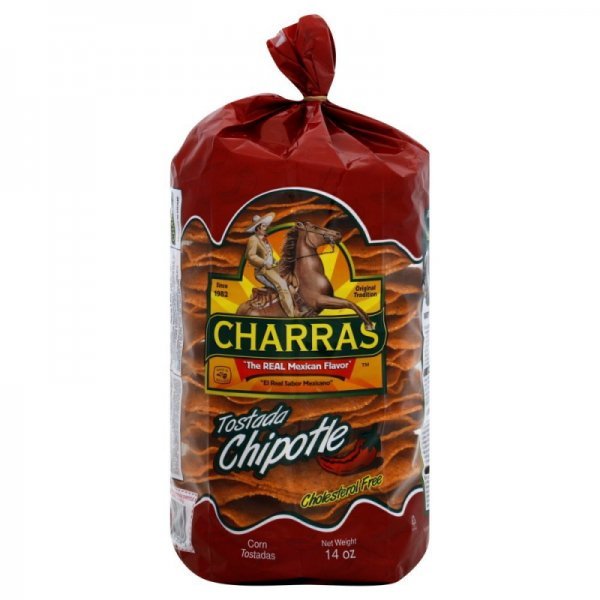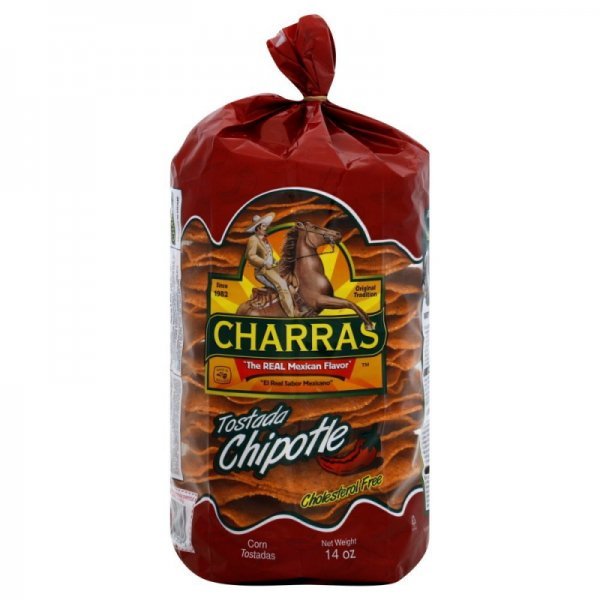Product pictures
| Amount Per 3 pieces, 40 g | |||
| Calories | 200 Kcal (837 kJ) | ||
| Calories from fat | 81 Kcal | ||
| % Daily Value* | |||
| Total Fat | 9g | 14% | |
|---|---|---|---|
| Saturated Fat | 4g | 20% | |
| Sodium | 310mg | 13% | |
| Total Carbs | 26g | 9% | |
| Dietary Fiber | 2g | 8% | |
| Protein | 3g | 6% | |
| Iron | 0.6mg | 3% | |
| Calcium | 40mg | 4% | |
* Percent Daily Values are based on a 2000 calorie diet. Your daily values may be higher or lower depending on your calorie needs.
Find out how many calories should you eat.
Ingredients And Nutrition Overview
Best
choice Good
choice Poor
choice Avoid
it!
choice Good
choice Poor
choice Avoid
it!
-
WeightWatchers Points: 4.4, PointsPlus: 5, SmartPoints: 7
WeightWatchers Points are estimated by carbohydrates, fats, protein and fiber in product. They are not an affirmation of better quality or nutritional value of the product or its manufacturer. Only way to count for dieters. Less points are better.
Read more at Weight watchers diet review -
Over 20% of daily saturated fat!
Bad! More 20% of daily saturated fat!
For years Saturated fat was claimed to raise cholesterol levels and give us heart attacks. Today different studies refute this claim. They say, that replacing saturated fat with carbohydrates or refined starch or sugar is not changing the heart disease risk. Not processed carbs nor saturated fats are good for you. Only if you replace it with polyunsaturated fat, you'll get a reduction in heart disease risk. So try to have a balanced diet. -
Salty! Has over 13% of the daily sodium max
The average American consumes 5,000 mg of sodium daily — twice the recommended amount amount of 2400mg for healthy adults, this is 1 teaspoon of salt.
For medical reasons many people should not exceed 1500mg of sodium.
Surprisingly, you're responsible for only 15% of the sodium in your diet the bigger part - 75% of the sodium that you consume each day comes from processed foods, not home cooking or the salt shaker.
Excess sodium intake increases the risk of high blood pressure, hypernatremia, hypertension, cardiovascular disease and other heart problems.
Are these reasons enough to cut the sodium intake? No doubt! -
Convert Salt tsps to Sodium mg easily
Salt (NaCl) is not excactly sodium (Na).
It is not right to use these terms as synonyms.
The FDA recommended limit of sodium is 2,300 mg per day (or even less - about 1500 mg while one is on low sodium diets).
This is much less than the weight of salt.
(5,750 mg per day or 3,750 mg for low sodium diet) and not so convenient to calculate.
Know how much sodium is in your salt - without a calculator:
1/4 tsp salt = 600 mg sodium
1/2 tsp salt = 1200 mg sodium
3/4 tsp salt = 1800 mg sodium
1 tsp salt = 2300 mg sodium -
More than 8% daily fiber!
Eat more fiber. You've heard it many times. But why it is so good for your health?
Dietary fiber is best known for its ability to make our digestion going right.
So want to prevent or relieve constipation - eat more fiber!
There are also other great health benefits as well, such as lowering your risk of diabetes, heart disease and cancer, and helping to maintain a healthy weight by helping to feel you full longer.
The best source of fiber are fruits, vegetables, whole grains and legumes and not processed foods with added fiber. -
Nice! 100% whole grain
Great job! Whole grains are a great source of fiber and other nutrients. Fiber is one of the most important things we need in our diet. Here is what fiber does for you: - Fiber helps your body process food from one end to the other. - Fiber plays an important role in mediating the blood sugar spikes from carbohydrate-laden food. Whole grains are not the only way to get fiber, BUT by choosing them instead of processed grains you've made a smart choice.
-
Contains controversial artificial colors
Once upon a time, there were no food colorings. Then folks figured out that food looks better and sells more when it can be enlivened through dyes. For most of food history, the dyes were from natural sources – beet juice for red, turmeric for yellow,etc… However, in the quest to increase color intensity and lower manufacturing costs, cheap artificial dyes were introduced to market. Unfortunately they pose a risk for hyperactivity in children, cancer, and allergic reactions. ----------- Sources: Feingold BF. Hyperkinesis and learning disabilities linked to artificial food flavors and colors. Am J Nurs 1975; 75-5: 797-803. Harley JP, Matthews CG, Eichman P. Synthetic Food Colors and Hyperactivity in Children: A double-blind challenge experiment. Pediatrics 1978; 62: 975-983. Kobylewski S, Jacobson M. Toxicology of food dyes. Int J Occup Env Heal 2012; 18-3: 220-246. McCann D, Barrett A, Cooper A, Crumpler D, Dalen L, Grimshaw K, Kitchin E, Lok K, Porteous L, Prince E, Sonuga-Garke E, OWarner J, Stevenson J. Food additives and hyperactive behavior in 3-year-old and 8/9-year-old children in the community: a randomized, double-blinded, placebo-controlled trial. Lancet 2007; 370: 1560-67. Schab DW, Trinh NT. Do artificial food colors promote hyperactivity in children with hyperactive syndromes? A meta-analysis of double-blind placebo-controlled trials. J Dev Behav Pediatr 2004; 25: 423-434. Sonuga-Barke EJS, Hollis C, Brandeis D, Konofal E, Cortese S, Lecendreux M, Daley D, Wong I, Ferrin M, Sergeant J, Holtmann M, Stevenson J, Danckaerts M, Van Der Oord S, Dopfner M, Dittmann R, Simonoff E, Zuddas A, Banaschewski T, Buitelaar J, Coghill D. Nonharmacological interventions for ADHA: Systematic review and meta-analyses of randomized controlled trials of dietary and psychological treatments. Am J Psychiatry 2013; 170-3: 275-289. Stevens LJ, Kuczek T, Burgess JR, Hurt E, Arnold LE. Dietary sensitivities and ADHD symptoms: Thirty-five years of research. Clin Pediatr 2011; 50:279-293. Williams JI, Cram DM, Tausig FT, Webster E. Relative effects of drugs and diet on hyperactive behaviors: An experimental study. Pediatrics 1978; 61-6: 811-817.
-
For dieters: FoodPoints value is 5
* FoodPoints are calculated by Fooducate based on fats, carbs, fiber, and protein. They are not an endorsement or approval of the product or its manufacturer. The fewer points - the better.
-
Highly Processed!
This product is highly processed. If you'll take a look at its ingredient list, you'll discover new words to add to your vocabulary. Many of theses ingredients are required to increase the shelf life of the product and improve the flavor that disappears when food is not fresh.
Allergens
Corn Allergy, Soy Allergy, Sesame Allergy
You Might Also Like
% RDI of Main Nutrition Facts
10%
of RDI* (200 calories) 40 g
-
Cal: 10 %
-
Fat: 13.8 %
-
Carb: 8.7 %
-
Prot: 6 %
-
0%25%75%RDI norm*
Calories Breakdown
- Carbs (52.8%)
- Fat (41.1%)
- Protein (6.1%)
Get Your Recipe of Health!
Follow RecipeOfHealth on Facebook!














Add your comment